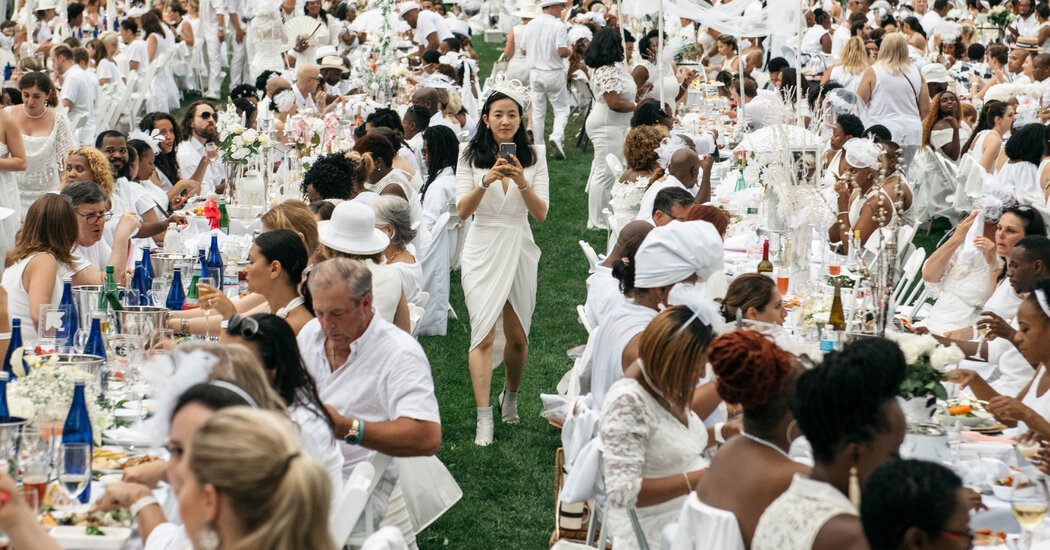
I just found out an event I am attending has a dress code requirement, and it is pastel. Pastel! I look horrible in pastels. To me, this is as bad as demanding everyone dress “creatively.” Dress codes seem to be very popular during holiday season, but do I really have to obey? Is there anything we can do about hosts imposing a requirement on guests? — Jasmine, Washington, D.C.
The party may actually be the last stronghold of the dress code, a sartorial diktat that is increasingly falling out of favor everywhere, from the workplace, to the school to Congress. As the balance of power shifts away from the institution and toward the individual, the idea of any establishment decreeing what is and is not appropriate dress, when dress is so deeply intertwined with personal identity, seems increasingly old-fashioned.
So why do so many hosts think a dress code is a good idea?
On the one hand, it does help ameliorate guests’ confusion and insecurity about what to wear to a special event. And it can help give a party a festive air; there’s something very adult playtime about fancy dress of any kind. (There’s a reason the Brits use “fancy dress” as a synonym for “costume.”) Also, if there are photos involved, a certain consistency can create a clear visual for posterity.
On the other hand, if the dress code is too vague, it only adds to the general what-to-wear confusion (“dress to impress” being a case in point). Ditto if it involves garments that seem antithetical to an individual’s sense of style. Either way, you can feel forced to choose between pleasing your host and pleasing yourself.
When I asked the designer Ulla Johnson about the issue, she admitted that she imposed a dress code at her wedding: everyone in white. But she also said she would have been OK if a guest had asked to be an exception to the rule.
“At this point, I would say dress codes can be pretty loosely interpreted,” she said. “Putting on something you don’t love because it obeys a code should be off the table.”
In other words, a party dress code is not the same as a school uniform; it can be stretched to fit each individual. When it comes to your situation, for example, Ms. Johnson said, “pastels” could mean various shades of cream or even gray. It doesn’t have to mean Jordan almond. Another option: beading and sequins, which will catch the light and give even the lightest palette a brighter, more textural dimension.
Honey Dijon, the D.J. and musician, likewise believes that literal interpretations of dress codes are generally “antiquated,” though she has her own solution to the dress code conundrum.
“Choose an accessory that is theme-related, such as a shoe or a bag,” she said. “That way, the host is satisfied and you still feel confident.”
Once, she said, she had been traveling and was invited to a black-tie dinner, but the airline lost her luggage, leaving her with jeans and a T-shirt. Out she went and bought some “bold earrings, a blazer and strappy heels,” and all was fine.
“When in doubt or in a bind, accessorize,” she said. It’s a guaranteed code-breaker of the most effective kind.
Your Style Questions, Answered
Every week on Open Thread, Vanessa will answer a reader’s fashion-related question, which you can send to her anytime via email or Twitter. Questions are edited and condensed.






